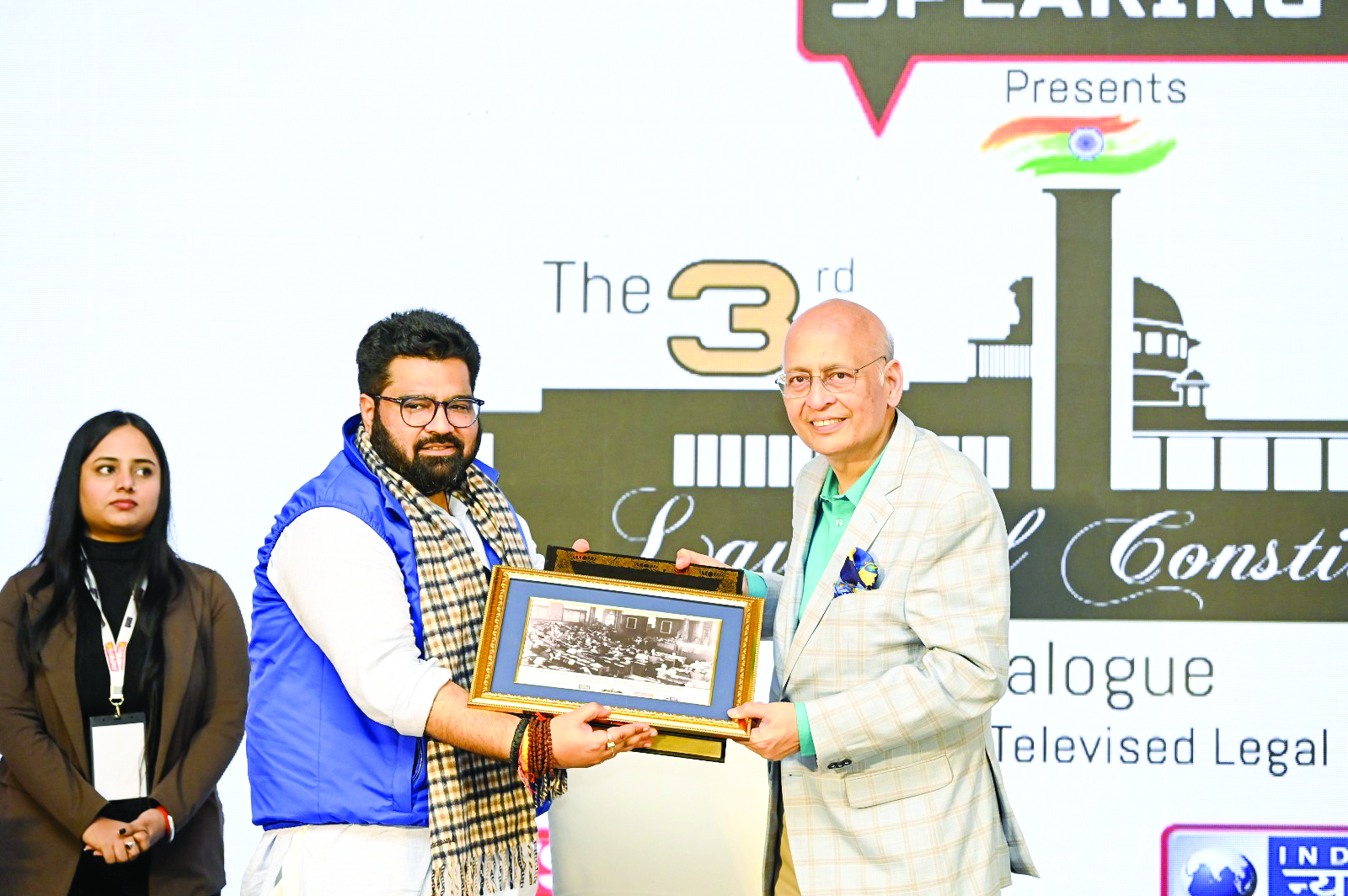Abhishek Singhvi said the 1991 Act aimed to draw a definitive line to prevent endless disputes over historical religious sites, acknowledging that many religious structures are built atop others.
New Delhi: Senior Congress leader and Member of Rajya Sabha Abhishek Manu Singhvi shared his thoughts on the different intriguing topics at the Legally Speaking event—the 3rd Law and Constitution Dialogue organised by iTV Network—on Friday.
Singhvi said the 1991 Act aimed to draw a definitive line to prevent endless disputes over historical religious sites, acknowledging that many religious structures are built atop others.
Singhvi discussed the recent Supreme Court proceedings regarding the Places of Worship Act.
He noted that the Court passed an excellent holding order that halts new suits and restricts final and interim orders in ongoing cases until the matter is fully resolved. Singhvi emphasised the need for stability, cautioning against a rush of suits across the country while the Supreme Court reviews the issue.
He further discusses that the 1991 Act aimed to draw a definitive line to prevent endless disputes over historical religious sites, acknowledging that many religious structures are built atop others. The significant question he raises is how far one should go in revisiting history. Quoting Gandhi, he warned that “an eye for an eye makes the whole world blind”, stressing that reopening these issues offers no value.
Singhvi highlighted a flaw in allowing surveys to examine structures when the Act prohibits changes, likening it to deciding on dinner attire when one is barred from attending dinner. He welcomed the Supreme Court’s recent intervention in pausing such enquiries while the Act’s validity is under review.
Singhvi further spoke about the fundamental pillars of the Indian Constitution, which he classified as institutional and non-institutional. Among the key pillars, he highlighted secularism, emphasising India’s diversity and the need to provide every citizen with a sense of belonging.
He stressed fraternity as more than just tolerance, encouraging the celebration of different viewpoints. He also pointed to federalism, noting India’s evolution into a federal structure, despite initially being framed as a unitary state. Additionally, institutions like Parliament, the Election Commission, and the CAG have contributed to India’s enduring democracy, distinguishing it from many nations that emerged from colonial rule.
However, Singhvi also acknowledged the gap between the theoretical ideals of these pillars and the current operational reality. He pointed out growing issues of fear, divisiveness, and distrust not anticipated by the Constitution. He cited instances of federalism being undermined, such as governors delaying decisions on state bills, impacting governance.
He criticised the selective use of the CBI in state matters and highlighted lapses in the Election Commission’s impartiality. Singhvi also pointed to unprecedented events in Parliament, such as the mass suspension of 142 MPs, as a sign of democratic erosion. These examples reveal a concerning divergence from constitutional principles and the need for reflection and reform.
He also praised the basic structure doctrine as a remarkable and unique concept that safeguards democracy in India. He criticised those who belittle it, emphasising that the doctrine is admired globally. The essence of the basic structure doctrine is that even a constitutional amendment passed by Parliament can be deemed unconstitutional if it violates fundamental features of the Constitution. Singhvi traced its origins from German philosopher Conrad’s ideas to the landmark Kesavananda Bharati case, where Nani Palkhivala argued its validity.
He explained that the doctrine ensures essential parts of the Constitution remain unamendable, with the judiciary determining what constitutes the basic structure on a case-by-case basis. This acts as a check on potential executive overreach, preventing dictatorship. Singhvi highlighted that judicial review existed long before the doctrine and has always limited Parliament’s power, which was never meant to be absolute. He concluded by noting that judges have exercised this power judiciously, using it sparingly to strike down unconstitutional amendments and protect the core values of the Constitution.

